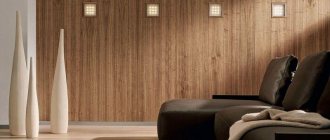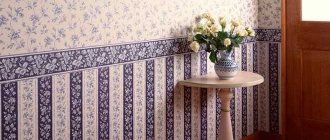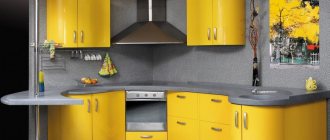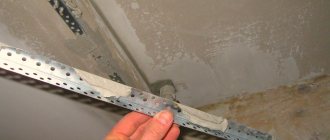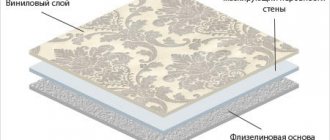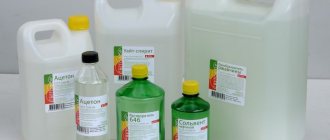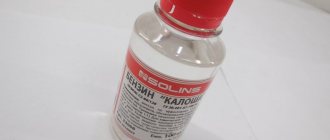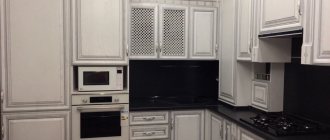Cement particle board or, as it is abbreviated as CSP, appeared relatively recently, but is already actively used for a wide variety of types of work. All this is due to a number of advantages that are appreciated by both private developers and industrial enterprises.
In this regard, the question arose of what to paint DSP with and how to do it correctly; this is what this review will be devoted to.
Cement particle boards are an excellent finishing material
How do DSP facades differ from other types of finishing?
Despite how many options for finishing a house now exist on the building materials market, some make the facade from DSP.
These are cement-bonded particle boards that have excellent qualities for finishing the external walls of a house. Sometimes they are used for cladding frame houses. DSP houses have earned a reputation for reliability because they can withstand the most difficult operating conditions.
Conclusion
Painting DSP is a fairly simple task. The main thing is to choose the appropriate paint and properly prepare the base. If you still have any questions, watch the video in this article, it explains some important points in great detail.
Because You are not logged in. To come in.
Because The topic is closed.
I will need to do it in a comprehensive manner; I can’t get by with two primers and a color scheme))) I have not only a DSP, but also a block. So I haven't decided yet. To understand the disaster, I’ll attach an ancient photo (the only one there is)))
The contours are closed; the first residential floor has not yet been completed; I have not yet reached the attic. Plus, we still need to build a boiler room. In general, without outdoor activities, getting things done)))))) ¶
Traditional methods of finishing the external walls of buildings are gradually being replaced by innovative technologies. They are based on the use of materials with good performance qualities. These include cement bonded particle board. After finishing with this material, the question arises of how to paint the chipboard on the facade. The painting itself is more aesthetically necessary; it does not provide any additional protection to the material.
What colors are suitable?
Due to their composition, the panels are resistant to environmental influences and do not require special protection. They can last a long time without additional painting. However, not all homeowners like the dull gray color of the material. In this case, correctly selected facade paint will come in handy.
DSP painting is carried out with the following types of paint:
- Acrylic. A good option for finishing DSP panels. It interacts well with cement and has excellent adhesion to the surface. It is better to use paint that contains a solvent. The water base penetrates the slab structure somewhat less well and stays on the surface for a shorter period of time.
- Latex. It is the best option for painting DSP. It has high moisture-proof and vapor-permeable properties; when dried on the surface, it forms an elastic film with high strength. The paint is resistant to alkali, so the surface can be washed with detergents. Applying the paint is quite simple - you can do the work yourself.
- Silicate. It has the highest degree of adhesion to the surface. The paint literally penetrates deep into the slab and makes it resistant to environmental influences. Can be used when painting damp surfaces.
It should be taken into account that painting of DSP with alkyd-based façade paint is not carried out. Such compositions do not interact well with alkali, so the surface cracks and the paint peels off.
KM selection
The panels are characterized by high resistance to atmospheric agents. Therefore, there is no need to protect them. The service life will be long without painting the finishing material. The question of how to paint the chipboard on the facade arises only because of the reluctance to have a dull gray facade.
Before painting the cementitious surface on the street, select the type of CM for the facade:
- Acrylic-based CM : excellent interaction with cement, high adhesion to the base. A composition with a solvent is recommended. Water-based dye has less adhesion to the plate, which reduces the service life of the coating, although it remains quite long.
Painting chipboard with acrylic-based façade paint to create open gaps between the boards:
Caparol Amphibolin Acrylic paint Amphibolin 10l, price 8792 rubles, manufacturer Caparol. Used as a finishing coat. The primer composition Caparol Tiefgrund TB (Caparol Tiefgrund TB) 10 l is pre-applied, price 5364 rubles.
Elastocolor Paint, price 14,000 rubles per 20 kg as a finishing layer. Apply to Malech primer of the same brand, price 7,000 rubles per 2 kg.
- DSP paint for exterior use is latex with moisture-proof and vapor-permeable qualities. A durable elastic film is formed on the surface, which is resistant to alkalis and can be washed with detergents. Working with the material is not difficult; coloring can be done without the involvement of specialists. The material is available for sale in an assortment of colors.
Facade paint KOMPOZIT Facade Latex, price for 14 kg – 2515 rubles. For external walls, a latex-based composite composition is an excellent option.
- A modern solution would be to use a water-based latex rubber compound. On the surface of the slabs there is a latex film with high adhesion, does not crack, and retains its integrity for at least 15 years.
For example, Super Decor Rubber paint is used, the price for 1 kg is 327 rubles. It contains Finnish latex and Italian pigments. The components protect against fading. This material is environmentally friendly and can be used both for outdoor and indoor work. As a facade paint, it is important that the composition is fireproof.
- silicate paint for chipboard: high degree of adhesion to the base. The dye penetrates quite deeply into the slab, which increases its resistance to weather conditions. The material can be applied to a damp surface.
Facade silicate paint, water-repellent Sylitol-Finish B1, 2.5 l, price 1,730 rubles, manufacturer Caparol. Finish painting is carried out with a second layer. The first layer is CAPAROL SYLITOL 111 KONZENTRAT (CAPAROL SYLITOL 111 CONCENTRATE) PRIMER FOR FACADE AND INTERIOR WORK (SILICATE) Concentrate 2:1 (10 l), price 2285 rubles.
Important: painting chipboard with alkyd-based façade paint is not possible due to poor interaction of the composition with alkali. The dye will peel off and the surface will crack.
Dyeing technology
DSP can be painted immediately after installation. Acrylic-based compositions are applied to a base treated with a primer, which significantly reduces the consumption of CM. The primer composition penetrates deep into the structure of the slab. Due to this, the absorption of the dye is reduced, and it is consumed sparingly.
Preparatory work on the surface
Before painting the outside of the wood chipboard, work is carried out to prepare its surface.
- After screwing in the screws, the recessed areas are leveled with putty. When the putty layer dries, the roughness is treated with a fine-grain sanding sheet. Use a damp cloth to remove dust after sanding;
- A deep penetration primer is applied to a dry base as the first layer. Allow time for the coating to dry.
The end side of the panels and the joints between the panels are given special attention. They are difficult to reach when the slabs are already fixed to the facade. Craftsmen recommend treating them with a primer first when they are in a stack. The slabs cut to size are primed. They can be mounted on the facade in a raw state. Joints are considered as a decorative element of the facade. But the cracks can be sealed with special compounds:
- The scheme for constructing a closed seam begins with the application of Deep Penetration Primer 10 l OPTIMIST (green) acrylic G103, price 434 rubles.
- The base layer is POLYMER-MINERAL FACADE PLASTER “RAIN”, price 87 rubles per 1 kg.
- Finishing plaster of GK Stena, Izhevsk.
The set of materials may be different, but the scheme for closing the seam is maintained: preparation of joints, application of base material for leveling, treatment with finishing putty. The seams are filled with elastic putties based on acrylic resins and polyurethanes. Silicone putties are not used for chipboard.
Under the rubber paint, the cracks are filled with acrylic sealant, sanded, dust is removed, and a deep penetration primer with an antiseptic is applied, which helps strengthen the material and reduce the consumption of CM. One square meter of joining gaps is treated with 150 grams of primer; 350 grams of paint will be needed.
Watch the video to better reinforce the material:
The decision on how the joints of the slabs will look is made before painting the DSP on the facade.
Tip: whitish chemical deposits or grease stains on the surface of the slabs can be removed with sandpaper. After sanding, the surface is washed with a solution of industrial soap.
Application of CM
KM is applied to cement bonded particle boards with a roller or spray gun.
Important: CM is applied 6 months after installation of the slabs. During this time, natural cleaning of the surface is expected. Unpainted slabs are not afraid of winter if the seams between them are sealed.
- The dye is applied 2 times. The mixture is stirred until smooth. The initial coating is considered basic. Dark or light spots will appear through it due to the unusual structure of the chipboard on the facade. This is how rubber paint is applied in a thin layer.
- When the first layer has dried, CM is applied a second time. Each composition has its own drying time. The rubber CM slab is painted a second time only on the second day. This is the final decorating layer. After this, the uniform distribution of color on the panel is visually visible. If a spray gun is used in the work, the dyes are checked for viscosity.
After a few hours, the façade is ready for use and resists external factors. All tools are washed after finishing work.
Painting DSP is not difficult. In the technological process itself, special attention is paid to the issue of choosing the type of dye for the slabs and the preliminary preparation of their surface. If it is necessary to give the paint the desired shade, then pigment is added to the composition. It is important that they remain stable in an alkaline environment. Otherwise, the color of the coating may change.
How to properly apply latex paint to a façade
Classification of facade paints for plaster
Pros and cons of silicate paints for facades
Painting technology and selection of paint for the facade of a house
Plaster with a “bark beetle” texture: nuances of painting
Carrying out painting work
Upon completion of the installation of cement-bonded particle boards, they move on to the final stage - painting them. If acrylic compounds are used for additional surface treatment, an acrylic primer is used. It penetrates deep into the material and reduces the degree of absorption. This in turn leads to paint savings.
Preparing the base
Before painting the cement board on the facade, the surface should be prepared accordingly.
At the stage of installing the panels on the facade of the house, all self-tapping screws are deepened by 1 mm and puttied. After the putty has dried, the roughness is removed with fine sandpaper, and the dust is removed with a damp cloth. Apply the first layer of deep penetration primer to a dry surface and wait for it to dry completely.
Particular attention is paid to the ends of the panels and the joints between them. The joints are left as an element of facade decor or sealed with a special compound. This is at the discretion of the homeowner. Then you can proceed directly to applying paint.
Also, due to objective reasons, for example under the influence of the sun, the slabs may become covered with grease stains or a whitish chemical coating. These manifestations are removed by sanding or cleaned using industrial soap.
Coloring
Painting of cement-bonded panels is carried out with a roller or spray gun.
It is not recommended to paint the surface of the facade during the first six months after installing the DSP. During this period, the surface will be cleaned naturally for painting.
The application of paint layers itself occurs in two layers. The first serves as the basis. Due to the structure of the material, dark or light areas will appear on the surface of the facade.
After the paint has completely dried, apply a second layer. It is final and evenly distributes the color on the surface of the panels. Painted slabs can resist moisture within just a few hours. As we can see, painting DSP is a fairly easy task. You just need to properly prepare the surface of the panels and choose the right type of paint.
Getting to know the material
What it is
So, what are DSP façade panels? What they are made of is generally clear from the name. The main material is Portland cement. Small shavings are used as filler; In addition, there are additives that prevent the destruction of cement by wood extracts.
The percentage composition of the DSP is approximately as follows:
- Cement - 65%.
- Chips - 24%.
- Water - 8.5%.
- Liquid glass - 2.5%.
The slabs have a smooth surface and thickness from 8 to 36 millimeters. However, finishing the facade of a house with DSP of large thickness is not practiced: panels from 10 to 16 millimeters are used. The sizes of the slabs are from 2600x1250 to 3200x1250 mm; the price depends on the thickness of the slab: approximately from 700 to 2300 rubles. The color of unpainted chipboard for the facade is gray or brownish; the chips are visible only on the broken end.
Good to know: facade panels with decorative coating are produced. They can be decorated with stone chips to imitate the surface of stone or brickwork.
Physical properties
- Density - 1300-1500 kg/m3, much heavier than water.
- The flammability is practically zero, although the material is classified as class G1. Fire does not spread across the surface of the stove; Fire resistance of DSP is up to 50 minutes. When heated, no smoke or toxic gases are released.
- The material is vapor permeable.
- The service life of the DSP guaranteed by the manufacturers is at least 50 years.
Video description
Fastening the slabs with self-tapping screws to a wooden base is shown in the video:
To make mounting holes, high-speed drills and screwdrivers with drills made of hard alloys are used. Impact drills and hammer drills are not suitable for this, as they can damage the integrity of the cement sheet.
Before attaching the DSP, it is necessary to select the correct fasteners. Its length should be 2.5-3 times the cross-section of the slab. For external work, only hardware with an anti-corrosion coating is used - galvanized or anodized. “Black” screws rust even under paint or plaster, losing strength and leaving stains on the finish.
Preparing OSB boards for painting
The better you prepare OSB sheets for painting, the better the paint will adhere and the more durable the coating will be. It is not recommended to paint OSB panels before installation, because you will still have to adjust the joints and sand down any irregularities. It is better to paint an already prepared wall.
Next, we will consider the recommended procedure for preparing the surface of an OSB board for painting.
Step 1 - Sanding
Surface grinding is necessary only to smooth and hide the texture of the OSB board, as well as in the case of covering the surface with stains. This is best done with a sanding machine. To make the surface uniform, it will have to be carefully sanded. Boards of OSB-3 and OSB-4 grades will have to be subjected to especially deep grinding, since it is necessary to completely remove the protective coating of varnish and wax.
Step 2 - filling the uneven areas with putty
To fill various recesses, oil-adhesive putty is used. It fills voids and traces of self-tapping screws. After this, the plates are additionally polished. You should not putty the seams and joints at the border of the slabs - you still will not be able to completely disguise them. After painting, the seams will still be visible. It is better to play up these lines with the help of decorative strips and correctly arrange the sheets of material so that there are no chaotic joints.
Important! When choosing a material, try to select slabs where there are no particles of bark or its content is minimal. During operation, the bark often peels off and spoils the appearance of the panels. The paint adheres worse, and then you have to repeat the entire painting process. If you are going to paint the OSB board on the outside, this is especially noticeable - because under the influence of ultraviolet radiation, the delamination process goes faster.
Step 3 - primer coating
The easiest way is to treat the OSB board with acrylic or acrylic-polyurethane water-based varnish, diluted with water in a ratio of 1:10. You can also use alkyd varnish, but it should be diluted with white spirit. Apply it slowly, carefully, so that it is better absorbed. Another option is treatment with an adhesive primer such as Aqua-filler or analogues. It is especially good if light paint is used, and reliably protects against visible stains from resin and essential oils on the surface.
Step 4 - coloring and drying
It is important to follow the correct procedure here:
1. First, it is recommended to apply paint with a brush to the edges around the perimeter of the panel. Here you need 2-3 layers.
2. Then use a roller to spread the paint evenly over the entire surface. Movements must be made in one direction
3. After drying at a uniform temperature and without drafts for 8 hours, apply a second coat of paint. If you want to maintain texture, try to apply a thin layer. You can increase the number of layers and achieve a perfectly smooth surface.
Construction solutions / Manufacturer's recommendations for working with CBPB boards. (Read 5443 times)
Continuing the series of articles on the use of CBPB in construction, we present recommendations from manufacturers for processing CBPB (cutting, drilling, milling, grinding), fastening CBPB (using nails and screws, placing and making seams) and surface finishing (painting, plastering).
Let us remind you that cement particle boards (CPB) are a building material with unique properties used in “dry installation” technology. DSPs belong to a generation of modern composite building materials that have properties that combine the strength and durability of cement with the flexibility and ease of wood processing. The universal technical characteristics of DSPs have already been fully appreciated all over the world.
Modern slabs are made by pressing a molded technological mixture consisting of softwood chips (24%), Portland cement (65%), minerals (2.5%) and water (8.5%).
The previous article describes options for using DSP boards for decorating the facades of buildings of any type.
Today on the Internet there is a huge amount of advice and recommendations for working with CBPB boards, but many of them do not correspond to reality. In order to figure out how to properly work with CBPB boards, we turned to the manufacturers' recommendations.
Attention! To obtain a high-quality processed surface of cement particle boards, cutting tools made of hard alloys are used.
Cutting.
When cutting (cutting, trimming) cement particle boards on site, hand-held circular saws with a disk diameter of 250 mm and a number of teeth of no more than 40 are used. The rotation speed of the disk is 3000-4000 rpm.
To obtain a smooth edge, the cutting disc should protrude beyond the bottom surface of the slab to the minimum possible distance. The slabs are cut from the reverse side in order to preserve the front side from damage.
Drilling holes.
To drill holes in cement bonded particle boards, hand-held electric drills with electronic speed control are used. To drill single holes, you can use twist drills made of HSS cutting material; for long-term operation, drills made of carbide are recommended.
Milling.
For milling cement-bonded particle boards, hand-held electric milling machines with end mills equipped with carbide tips are used. The rotation speed of the cutting tool ranges from 25-35 m/sec.
Grinding.
Grinding of cement-bonded particle boards is not carried out at the JLLC “TsSP BZS” enterprise. In practice, when installing slabs, local irregularities may appear at the joints, which should be removed by grinding. For this purpose, hand-held vibrating, eccentric (orbital) or belt sanders are used. The grain size of the grinding material should be in the range of 40-80 units.
Attention! When grinding, the top finely dispersed covering layer is damaged, which leads to the opening of the structure of the slab, an increase in water absorption, and a deterioration in physical and mechanical properties. After finishing the treatment, it is necessary to apply primer to the slabs to stabilize the surface and reduce hygroscopicity.
When cutting, drilling, milling and grinding cement-bonded particle boards, a large amount of dust is released, so it is necessary to use dust suction devices and aspiration means.
Attention! All connecting elements and metal elements of supporting structures must have an anti-corrosion coating. Before attaching cement bonded particle boards, it is necessary to ensure that the frame elements are vertical and horizontal and that they are in the same plane. All planes and edges of cement bonded particle boards must be primed before fastening. Particular attention should be paid to priming the edges.
Cement particle boards are attached to load-bearing structures using self-tapping screws and rivets (when attached to a metal profile).
In order to ensure technologically correct fastening of cement-bonded particle boards, the main requirement is to comply with the pitch between fasteners and the distances between them and the edges of the boards, according to the following diagram and table.
Holes for self-tapping screws and rivets are drilled into the DSP with a diameter 1.2 times larger than their own diameter. To deepen the heads of self-tapping screws and rivets, the holes are first countersinked to a depth 1.5-2 mm greater than the height of the heads.
To fasten the DSP without pre-drilling holes, you can use special self-tapping screws with a reinforced tip and a countersunk head equipped with blades to form a recess (countersink) to fit its dimensions.
Attention! The size of screws and self-tapping screws is chosen with the condition that the length of the pinched part is at least twice the thickness of the DSP board and at least 10 screw diameters. When tightening screws and self-tapping screws, do not use excessive force to avoid cracking the slab.
The table shows the minimum dimensions of screws and self-tapping screws used for fastening cement-bonded particle boards to elements of load-bearing frames, depending on its thickness and the diameter of the dowel of the hardware product.
For fastening, it is recommended to use pneumatic, electric or cordless screwdrivers with a system for adjusting rotation speed and torque.
Attention! When using cement particle boards for cladding walls, partitions and ceilings, it is necessary to lay them with a seam, the width of which is 6-8 mm for external use and 3-4 mm for internal use. The seam can be closed with an external strip, a wooden, tin, metal or polymer profile can be inserted, or covered with plastic putty based on acrylic resins or polyurethanes.
SURFACE FINISHING DSP.
Cement particle boards, like any wood-based particle boards, are subject to slight expansion and shrinkage under the influence of changes in temperature and humidity levels.
At the joints of the slabs, it is necessary to leave a gap for thermal expansion, allowing linear expansion of the slab. To prevent cracking in the joint compound, the width of the closed expansion joint should be 8 mm for external use and 4 mm for internal use.
The simplest is an open expansion joint.
Attention! Cement particle boards are supplied from the manufacturer with a moisture content level of 9±3%. Interim storage before processing, as well as installation, must be carried out in dry conditions. Failure to comply with this requirement may result in the boards absorbing an unacceptably high amount of moisture, which can lead to damage in closed seams and/or fastening areas, as well as damage to the paint coating on the surface of the boards applied at the work site.
The designs of the end faces of cement-bonded particle boards and joints are varied. The most common systems are presented below. When using cement bonded particle boards outside buildings and for wall cladding, it is not recommended to sand the surface of the boards (except in cases where the sanded surface requires special requirements). Sanded boards, in which the wood particles are directly visible on the surface, are generally used for flooring only (due to strict thickness requirements) and also in special cases.
.
Open expansion joint.
In order to obtain an aesthetic appearance of the seam, it is recommended to first chamfer the outer end faces of cement-bonded particle boards at an angle of 45°.
.
An open expansion joint with chamfered edges at the edges of the CBPB.
Closed expansion joint.
Using a floor strip.
Attention! Regardless of the methods used for surface finishing of cement bonded particle boards, mandatory priming of their planes and edges is required. The reverse sides of the slabs are primed before installation.
Painting of DSP boards.
The simplest and most common method of surface finishing of CBPB is painting with the formation of expansion joints between the slabs (open joints).
Facade paint in your city
On the construction market, some sellers insistently offer to buy heat-insulating paint. Most often, this paint is called something like this: liquid glass-ceramic (or simply ceramic) thin-film thermal insulation coating, or in short - liquid thermal insulation.
The product is offered under different trade names.
Sellers claim that this paint is based on the now fashionable nanotechnology for use in space projects. A layer of paint 1 mm thick supposedly replaces 50 mm of foam in terms of heat-saving properties.
They recommend it for insulating anything, including the facade.
They may even show you certificates and other documents. An attentive and meticulous reader will not find in these documents confirmation of the exceptional heat-saving properties of the coating. We were able to find test results of the thermal insulation properties of paint from one well-known brand, which indicate that the layer of such paint is 1 mm thick. can only replace 1.6 mm of foam.
Facade and general construction materials
We bring to your attention a price list for paints and primers for protecting facades and roofs. All materials are made from high-quality raw materials and provide reliable and protect the facade and roof from the negative effects of precipitation, polluted air and ultraviolet radiation.
Facade materials
Materials for REPAIR OF OLD ROOFS AND PROTECTION OF NEW ROOFS
one-component weather-resistant roof enamel
For painting slate, tiles, ACED, repairing old and making new roofs based on mineral materials (slate, cement-sand tiles, concrete, plaster and cement-bonded particle boards, brick). Resistant to atmospheric factors (snow, rain, ultraviolet).
basic - gray, additionally tinted according to RAL table with increasing cost, production time 3-4 working days
two-component polyurethane waterproofing mastic for roofs
For installing new and repairing old roofs, sealing horizontal roofs, can be used for waterproofing swimming pools and water tanks, protecting slate, roofing felt, galvanizing. Recommended for anti-corrosion treatment of steel structures, protection of pipelines, etc. Surfaces treated with mastic can be painted with paints or enamels after curing.
basic - gray, tinted in pastel colors without increasing cost, production time 3-4 working days
with a thickness of 1mm = 1.7 kg 2mm = 3.4 kg
668.1 RUR/m² 1336.2 RUR|m²
Materials for WALLS AND CEILINGS
universal, penetrating, water-dispersible acrylic primer for interior work, environmentally friendly, contains antiseptics
For preparatory work on various types of surfaces (concrete, gypsum, plasterboard, wood, brick, plaster). The material does not have a strong odor, is wear-resistant, environmentally friendly, moisture-resistant, and contains antiseptics.
acrylic putty for walls and ceilings, does not shrink, is environmentally friendly and fireproof
Acrylic-based finishing putty for interior work. Eco-friendly, fireproof, easy to sand, plastic. Strong adhesion to various types of substrates (concrete, plasterboard). Gives a flat, smooth surface.
water-based acrylic paint for dry rooms, prevents the formation of fungus and mold, thixotropic, environmentally friendly, fireproof
For painting walls and ceilings indoors. Resistant to wet cleaning and household detergents. Vapor permeable. economical, odorless, wear-resistant. Suitable for painting concrete, plastered, brick, wooden surfaces, chipboard, fibreboard, non-woven and glass wallpaper.
base color: super white (semi-matte), tinted using systems: MCP, NCS, Tikkurilla Symphony from 70 kg with increasing cost
water-based latex paint for rooms with high humidity, antiseptic, thixotropic, moisture-resistant, environmentally friendly, fireproof
For painting walls and ceilings indoors. Resistant to frequent wet cleaning and household detergents. Ideal for bathrooms, kitchens. Vapor permeable, quick-drying. economical, odorless, wear-resistant. Suitable for painting concrete, plastered, brick, wooden surfaces, chipboard, fibreboard, non-woven and glass wallpaper.
base color: super white (semi-matte), tinted using systems: MCP, NCS, Tikkurilla Symphony from 70 kg with increasing cost
water-based dispersion paint for dry rooms, thixotropic, environmentally friendly, fireproof
For painting walls and ceilings indoors. Light wet cleaning is acceptable. Vapor permeable, economical, odorless, wear-resistant. Suitable for painting concrete, plastered, brick, wooden surfaces, chipboard, fibreboard, non-woven and glass wallpaper.
base color: super white (matte), tinted using systems: MCP, NCS, Tikkurilla Symphony from 70 kg with increasing cost
water-based latex paint for rooms with high humidity, antiseptic, thixotropic, moisture-resistant, environmentally friendly, fireproof
For painting walls and ceilings indoors. Resistant to frequent wet cleaning. Vapor permeable, quick-drying, economical, odorless, wear-resistant. Suitable for painting concrete, plastered, brick, wooden surfaces, chipboard, fibreboard, non-woven and glass wallpaper.
base color: super white (matte), tinted using systems: MCP, NCS, Tikkurilla Symphony from 70 kg with increasing cost
CLEANERS AND HYDROPHOBIZERS FOR FACADES
façade efflorescence cleaner
Used to remove efflorescence, cement deposits and grout from the seams of facades made of concrete, red and sand-lime brick, stone, porcelain stoneware, plaster, paving and facade slabs.
Gives water-repellent properties to concrete, brick, natural and artificial stone, paving and facade slabs.
Materials for FACADES
heat-insulating, energy-saving paint for facades, prevents condensation, environmentally friendly, fireproof, can be applied to concrete, wood, brick, chipboard.
Water-based, one-component paint with energy-saving properties for thermal insulation of walls and building facades. Resistant to weathering, temperature changes, and UV radiation. Scope of application: facades and plinths of houses, roofs, blind areas, foundations, loggias. balconies, window frames.
base color: white (matte), tinted from 100 kg with increasing cost
at a thickness of 0.75 mm-1 l/m² at a thickness of 1.5 mm-2 l/m²
acrylic primer to improve the adhesion of finishing and intermediate layers, contains quartz filler and antiseptic, environmentally friendly, moisture-resistant, fireproof.
For preparatory treatment of hard, non-moisture-absorbing concrete substrates. Forms a hard, rough surface with adhesive characteristics, increases adhesion. Designed for indoor and outdoor use. Used for preparatory treatment of monolithic concrete bases, industrial floors, concrete walls and ceilings, etc.
acrylic primer for adhesion of finishing and intermediate layers, contains quartz filler and antiseptic, environmentally friendly, moisture-resistant, fireproof.
For preparatory treatment of hard, non-moisture-absorbing concrete substrates. Forms a hard, rough surface with adhesive characteristics, increases adhesion. Designed for indoor and outdoor use. Used for preparatory treatment of monolithic concrete bases, industrial floors, concrete walls and ceilings, etc.
one-component paint vapor-permeable material weather-resistant UV-resistant protects against microorganisms
Manufacturing features and main advantages of this group of products
As the name suggests, the basis for production is cement and shavings; let’s look at the composition in a little more detail:
- 65% of the volume of the finished product is occupied by high-quality Portland cement grade M-500 and higher . This gives the sheets the highest levels of strength and resistance to stress; it is important to use only high-quality cement.
- About 24 percent is occupied by wood shavings, passed through special grinders, which separate it into pieces 3-5 millimeters wide and 20 centimeters or more long . This component provides the product with high soundproofing and thermal insulation properties; in addition, wood is an environmentally friendly, renewable natural material.
- About 2.5% is occupied by liquid glass, which is used to process wood and make it highly resistant to moisture and mold . Without such treatment, the wood in the composition would very soon begin to deteriorate.
- And finally, approximately 8.5% is water . As you know, moisture is present in all materials and CBPB is no exception.
Such boards are not afraid of a humid environment, temperature changes, mold, chemical influences and therefore are used for a wide range of works:
- Finishing the facades of frame structures - sheets are not afraid of high humidity and low temperatures, which means they will serve as reliable protection for the building from adverse natural influences.
In the photo - covering the house with cement bonded particle board allows you to carry out work as quickly as possible
- Such sheets are an excellent option for repairing old facades, erecting partitions, cladding walls and ceilings, flooring and much more. This is a truly universal material that can help out almost anywhere.
DSP is an excellent base for any floor covering
- The material perfectly withstands both low and high temperatures, so it is used for lining ventilation ducts, chimneys, and various surfaces exposed to chemical influences.
Important! The material has been tested, and its safety for human health has been confirmed both in our country and abroad: in the European Union, the USA, and so on.
